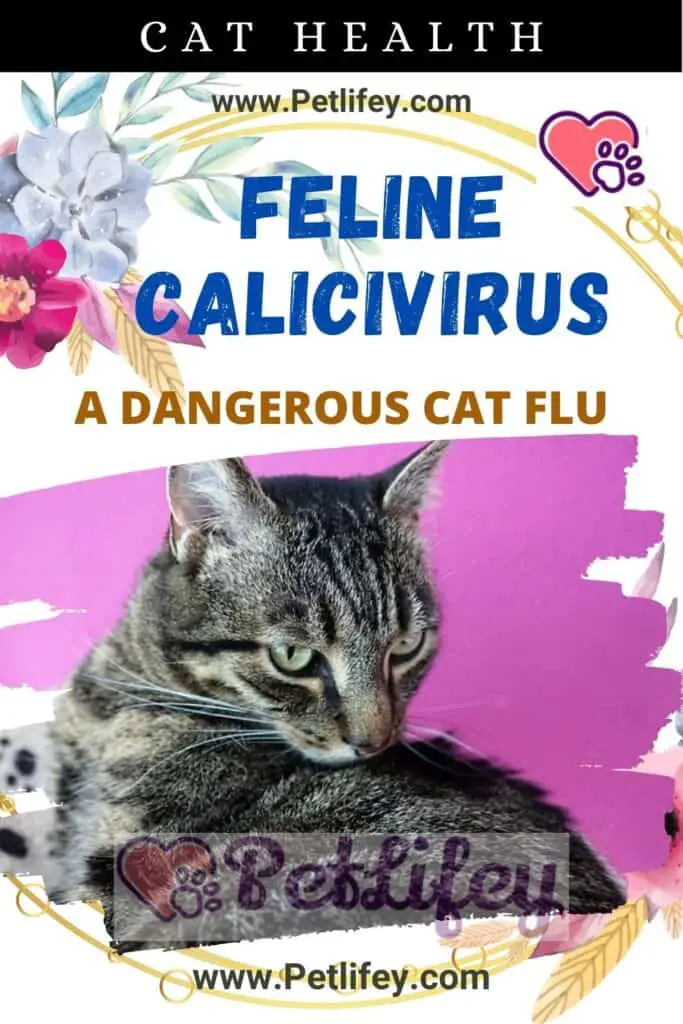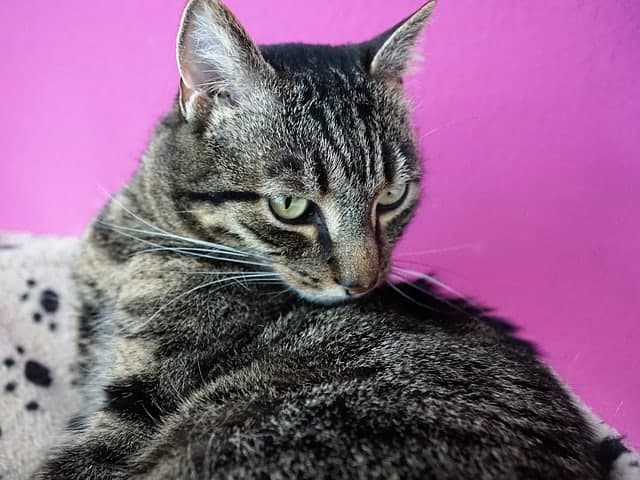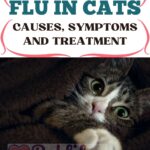
Today we want to talk to you about feline calicivirus, a common disease in cats that is produced by a virus, which also has a high capacity to mutate (within the picture of feline flu). It is highly contagious and if not treated in time, it can be fatal, especially in cats of old age or with depressed immune systems. But do not trust, because in practice, any cat can contract the calicivirus under certain conditions.
Calicivirus in cats, what is it?
The calicivirus is a kind of cat flu, caused by a virus that spreads from jacks other and causes respiratory ailments serious, such as feline rhinotracheitis virus, with symptoms ranging from sneezing, rhinitis, tearing, ulcerations in the mouth and which can also be complicated by pictures of pneumonia, if it is not treated in time.
Something important to note is that it is a highly mutant virus, which means that its treatment or prevention is not simple and vaccines do not assure us that a cat cannot contract the disease.
How is it spread in cats?
Calicivirus can be spread by direct contact from an infected cat or carrier to a healthy cat, through saliva, when grooming each other, by sneezing or secretions, through tears and mucous membranes.
But the contagion can also occur indirectly, through objects, such as common feeders or drinkers, and the virus is capable of remaining active, up to four months outside the cat in the environment, waiting for a new host.
Say that many cats that have overcome the disease or have developed antibodies, can become carriers of it and be a route of infection for other cats, without developing the disease.
What symptoms does a cat with feline calicivirus have?
There are several symptoms that appear in a cat that has contracted the calicivirus. Infection of the upper respiratory tract will cause discharge from the nose, mucus and tearing. Ulcers and sores can appear in the mouth and nose, especially on the tongue, and fever and even lameness.
What cats can develop the disease?
Feline calicivirus is a disease that occurs most frequently in cat colonies and communities of feral cats and stray cats. In these groups, the most vulnerable will always be the elderly cats, which have the weakest defences.
Also cats that are affected by other pathologies, have a weaker immune system. The kittens also are vulnerable to the virus, by having the immune system is still underdeveloped. A domestic cat with access to the outside can also develop the calicivirus by contagion.
If the disease evolves, skin edema, skin ulcers, stiffness in walking, and joint pain may appear. In more severe and advanced cases, there may be systemic inflammation from failure with liver necrosis, pneumonia, and pulmonary edema. That is why it should be detected as soon as possible, because if it is not treated in time, it can cause the death of the cat that suffers from it.
What can be done to avoid getting the disease?
Vaccination is recommended, especially if a domestic cat lives with other cats and has access to the outdoors. It must be said that cats that have developed and overcome the calicivirus, may in the future be resistant to the disease, this means that they can become immune, but the time will not be very long, because after 1 or 2 years, it is possible that the strain has mutated, which could lead to being infected again.
Current vaccines are manufactured starting from calicivirus strains that have high compatibility with the rest of the strains that are registered. In this way, it is ensured that the vaccine has a degree of success and protection against the virus, although never 100%.
Other measures to avoid contracting the disease, in case of identifying an infected cat, is the immediate isolation of other healthy cats.
Disposable gloves and gowns should always be used and, as far as possible, clean all those objects that have been regularly exposed to the virus and that have been shared.
As we have commented before, cat colonies can be the most common contagion points, but if this happens, palliative measures can be taken that will help restore normality:
If the calicivirus outbreak affected cats that were previously vaccinated, the entire exposure area should always be cleaned as much as possible.
If it cannot be done, wait at least 4 months before introducing a new cat into the colony.
Cats that have been exposed to the outbreak, even being vaccinated, should remain an average of three months in isolation, in case they could act as carriers of it.
If the calicivirus outbreak has affected cats that were not vaccinated, it is recommended only to introduce into the colony, cats that have previously been vaccinated with feline calicivirus.
Cats that were exposed to the virus will not be able to leave the colony until any symptoms related to the virus have disappeared. From that moment they can be adopted, but provided that they are in contact during the first 4 months with only correctly vaccinated cats.
Is feline calicivirus treated?

As we have said before, calicivirus is a virus that has the ability to mutate and change, quite frequently, so a vaccine cannot protect against subsequent strains, so the best treatment against this virus is the prevention of any contagion, through cleaning and isolation, at the same time that it is detected that a cat can be a carrier of the disease.
For the detection of this disease, the diagnosis is based on a series of pictures and clinical evidence, as well as the corresponding tests that will be carried out in the laboratory. In these cases, the tests for feline influenza viruses consist of collecting samples, for subsequent study of the oral mucosa, to obtain a sample, which will be cultured and will help identify the virus.
Currently there is no drug that can kill the calicivirus, so the objective of the treatments, as in other diseases such as feline pancreatitis, is to support and care for the cat’s state of health, avoiding reducing the effects of said disease and trying at all times to alleviate the symptoms as far as possible .
In some cases, treatment may include antibiotics to control possible secondary infections, medication for a runny nose and to allow you to breathe better.
In most of these cases, moreover, cats that suffer from feline flu tend to lose their appetite, so it is important to motivate them to eat through attractive and highly palatable foods.
In some cases and given the level of malnutrition, veterinarians may recommend force feeding, by syringe, of liquid food and always with great care to prevent the cat from choking.
For other cats in a more serious condition, the veterinarian will recommend their admission to the clinic, for a more intensive follow-up.
This article is only informative and any prescribing must always be supervised by a veterinarian, so if you detect that your cat may have any of the related symptoms, we will recommend that you put yourself in his hands as soon as possible. The best treatment is early detection.






